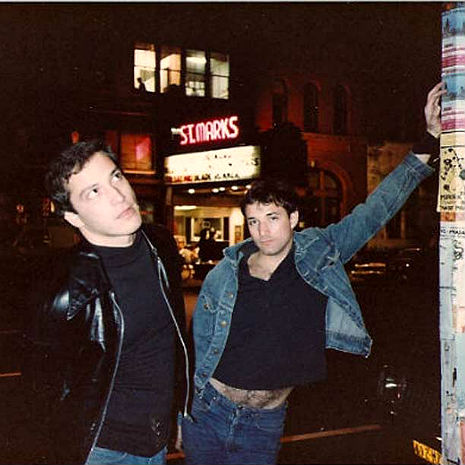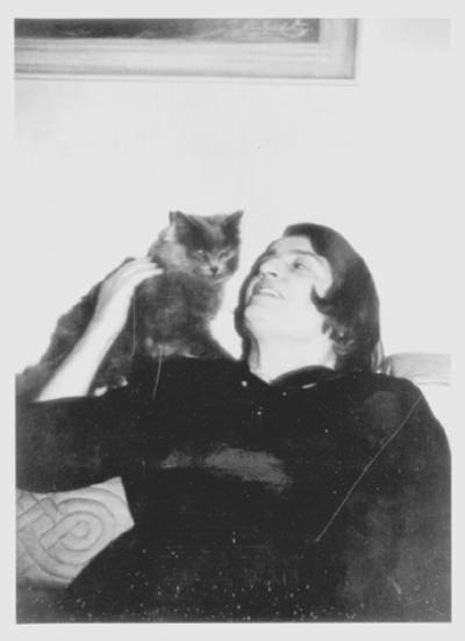
“Patriot” by Dimitri Drjuchin, 2014
Scottish songwriter/performer/blogger Momus, the cynical, sex-obsessed eyepatch-wearing, world-traveling postmodernist who gave the world such unforgettable ditties as “Coming in a Girl’s Mouth,” “Enlightenment” and “Welcome to My Show Trial” (which Grant Morrison told me is his favorite song of all time) is now an author.
In fact, the man once called “the most famous unknown in pop” has actually got three novels under his belt and the latest, UnAmerica makes four. Already a big fan of his music, I enjoyed it immensely. It makes sense that a musical purveyor of witty wordplay like Momus would get into the novel business.
makes four. Already a big fan of his music, I enjoyed it immensely. It makes sense that a musical purveyor of witty wordplay like Momus would get into the novel business.
From the press release:
The nation is in the iron claw of capitalism, Christianity’s basic principles are flouted daily, the South has won the Civil War, slavery is widespread, exploitation rampant, and God—now working as a janitor at Tastee Freez with late-onset Alzheimer’s—is rapidly losing the plot. In an effort to obliterate his botched creation from memory, the fallen divinity recruits retail worker Brad Power to enlist a crew of twelve for a seafaring adventure. The mission? To uninvent America.
It’s never too late, apparently, for an act of creative destruction.
UnAmerica is published by Penny Ante Editions as part of their “Success and Failure Series”.
is published by Penny Ante Editions as part of their “Success and Failure Series”.
Chapter One
It’s a sunny afternoon during the month of Hekatombaion. Wild pear trees—glabrous, their leaves cordate, nearly orbicular, their nuts oval—are coming into flower. I’m headed eastbound on Tupperway Drive. I make an illegal U-turn at the Boone Hill United Methodist Church and am soon pulling my Dodge Custer into the Tastee Freez car park.
Inside the restaurant I’m ushered to a booth where I order a Hot Fudge Sundae with a large side of fries.
This is not the sort of food I normally eat, or even like very much, to be honest. I prefer to picnic alone in the middle of a field somewhere, with a pot of raspberry jam, two slices of crisp bread, a hard-boiled egg, and some unsugared tea in a Thermos flask.
The wind might rustle in the willows, rabbits might graze in the boskiness of a hedgerow, and John Constable would probably be standing at an easel nearby, whistling as he smears flecks of Cremnitz white from a soft metal tube into a lowering and turbulent paint sky.
After lunch I will push my bicycle over the recently-ploughed sod, casting a lustful yet repressed eye at a handsome farm labourer stripped to the waist, and cycle to the nearest village, where I will seek out junk shops selling bric-a-brac, or perhaps stumble on a serendipitous church fete.
“Brad?”
The frail, fussy voice takes me by surprise; an old man dressed like a janitor emerges from a utilities closet.
“Brad, thank you for coming. I know that many people would assume this was a hoax. You have shown yourself to be a true believer.”
“Uh, great to meet you!”
God’s handshake isn’t particularly firm. His foreign accent, darting brown eyes, swarthy complexion and cheap nylon janitor’s uniform make him look like an illegal kitchen worker from the Middle East.
“Now Brad”, says God, “you’re going to have to make allowances for me. I have late-onset Alzheimer’s disease.”
“I’m very sorry to hear that!”
“Yes, it’s my cross to bear, so to speak. I’ve totally forgotten how to create things. Do you know what my main project is right now, Brad?”
“I wouldn’t presume to guess or know, sir!”
“I want to uninvent America, a nation I have come to despise.”
This is surprising.
“Why do you despise America?”
God knits his brows.
“Because Americans have lost touch with everything important. They’ve become fat, greedy, selfish pigs.”
God explains how little he was impressed by the mass extermination of indigenous peoples, the triumph of the slave-driving South over the Yankees during the Civil War, and the Confederate States of America’s use of nuclear weapons against civilian populations in Britain during the Second World War.
“That sounds fair enough”, I observe. “I’m a secret British sympathiser myself.”
My sundae and fries arrives. God is talking about the Hutterites; how they were the only Americans to have followed his injunction in the Acts of the Apostles to pool their possessions, sell all their goods and distribute them according to need.
“And you know what they got for this, Brad? They were called communists, jailed, beaten up, killed. The states started passing laws forbidding them to buy more land. They had to move to Canada.”
“Brad, Americans have become the opposite of everything I intended humans, and especially Christians, to become. If I still could, I’d smash this nation to potsherds, or flood the entire continental basin from sea to shining sea.”
God becomes suddenly businesslike.
“I am seeking a faithful servant to recreate in reverse the voyage of Saint Brendan, dearly beloved to me. Do you know much about him?”
Nibbling on a french fry, I confess that I don’t know anything about Saint Brendan.
God explains that the monk set off from Ireland in the early 6th century, inspired by a holy man called Mernoke, who had discovered a magical land beyond the western horizon where every herb was full of blossom and every tree full of fruit. This, says God, was Eden, or Tir na nÓg, the earthly paradise where death and disease were unknown. Brendan set off in a coracle with twelve hand-picked associates, hoping to discover this land. After seven years of paddling from island to island, he succeeded.
God shakes some hundreds-and-thousands onto the surface of my fudge sundae. Calm, epic music punctuated by the cries of sea birds fills the air. We crane over the glass and seem to be zooming in on a tiny boat crossing an ocean of whipped cream.
The Irish discovered America, says God. But the earthly paradise has become an unparadise. The whole situation has to be reversed. America has to be undiscovered. People need to turn their backs on all it stands for. People need to learn about—and learn from—the rest of the world.
Now it’s the rest of the world that needs to become the shining example, the Tir na nÓg, the Shangri-La, the Golden Fleece.
“You, Brad, and your twelve hand-picked companions must learn—and teach the world—how to become as unAmerican as possible. That is my final wish, and my last command. Do you accept the challenge?”
What can I say?
UnAmerica is published by Penny Ante Editions as part of their “Success and Failure Series.”
is published by Penny Ante Editions as part of their “Success and Failure Series.”
If you don’t like reading, Momus explains what UnAmerica is all about and then reads the first chapter in a quite passable American accent in the video below.
is all about and then reads the first chapter in a quite passable American accent in the video below.













XX.jpg)


















